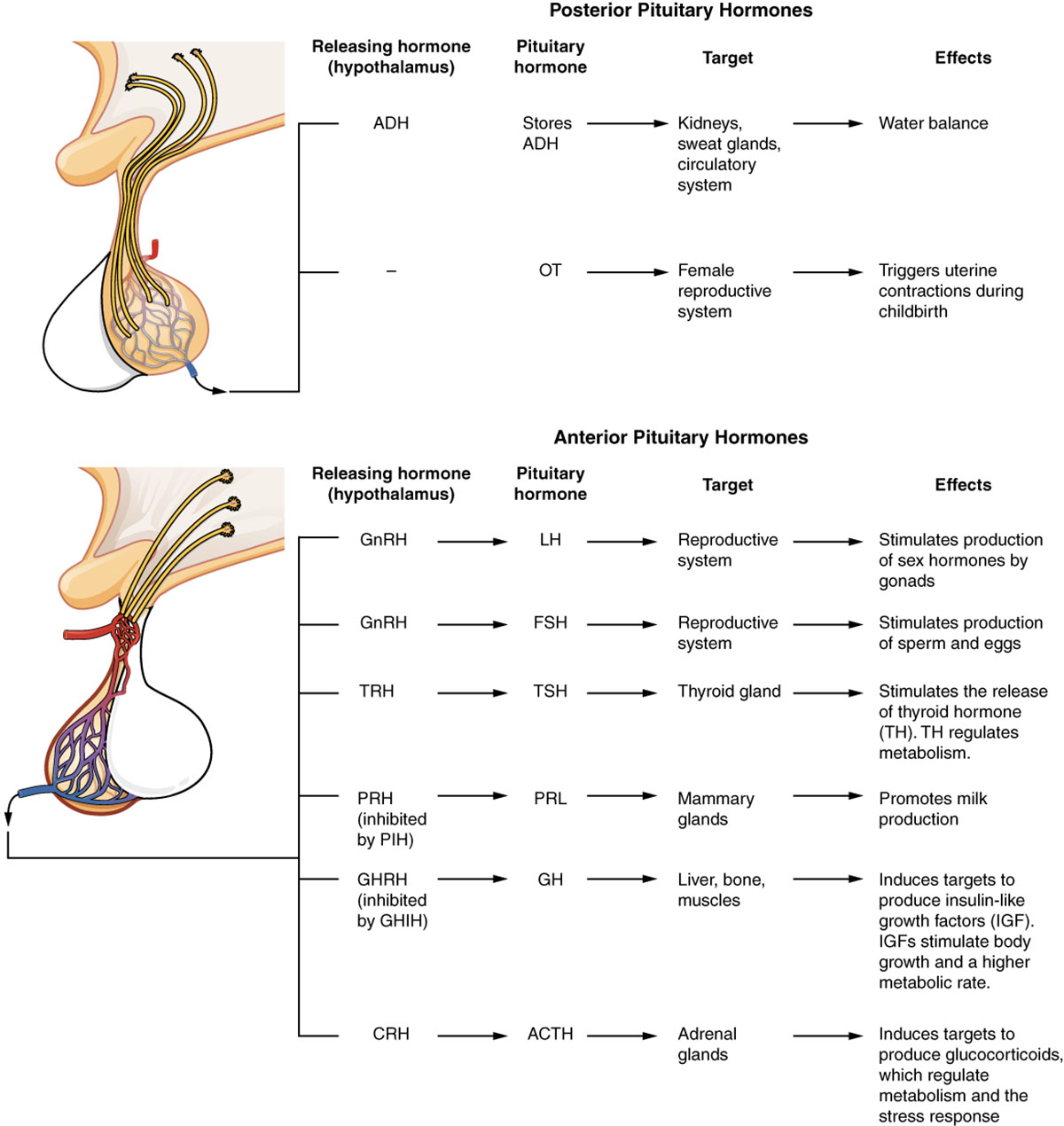
Pituitary Hormones and Functions
The pituitary is a small gland located below the brain, right at the skull base in a specific area which is medicinally referred to as sella turcica or pituitary fossa. It weighs less than one gram and it visually resembles a bean. Sometimes it is also referred to as the master gland because it is in charge of regulating the secretion of all different types of hormones inside the human body. The pituitary gland has a larger frontal region which is medicinally referred to as adenohypophysis and a smaller posterior region which is medicinally referred to as neurohypophysis. The pituitary stalk connects the pituitary gland to the region of the brain medicinally referred to as the hypothalamus. Between the pituitary stalk and the pituitary gland are the crossing fibers of the optic nerves which are medicinally summed up as the optic chiasm. Each side of the pituitary gland has its own cavernous sinus, and each one of them has a carotid artery running through it and carrying blood to the brain. Cavernous sinuses also have certain important nerves running through them, which are in charge of controlling the movement of the eyes. As already explained, the pituitary gland is located very closely to various major intracranial blood vessels and nerves and it controls the hormones, so it can be associated with a large number of neurological and hormonal symptoms of different disorders. Certain medical conditions related to the pituitary gland may lead to an increased production of different hormones inside the human body. There are also other disorders of the pituitary gland which may occur, but they are usually not associated with increased production of the hormones. It is only in the cases of enlarged tumors that the additional pressure on the pituitary gland may trigger a reduction or a complete absence of the production of certain or all hormones inside the human body. The list of medical conditions which may affect the pituitary gland includes lymphocytic hypophysitis, epidermoid tumor, Rathke’s cleft cyst, craniopharyngioma, meningioma, pituitary apoplexy, recurrent adenomas, endocrine inactive adenomas, thyrotroph secreting adenomas, prolactinoma, Nelson’s syndrome, Cushing’s disease, acromegaly, different sorts of pituitary adenomas and pituitary failure.
Hormones Produced by the Pituitary Gland
How tumors affect production of hormones?
There are two types of pituitary gland tumors and those are the secretory and non secretory. A secretory type increases the production of the hormones while the other does not until it reaches certain size where it actually reduces the production of hormones. Tumors may trigger hypersecretion, hyposecretion and tumor mass effects.











-In-Infants-And-Older-Children_f_280x120.jpg)





Your thoughts on this
Loading...